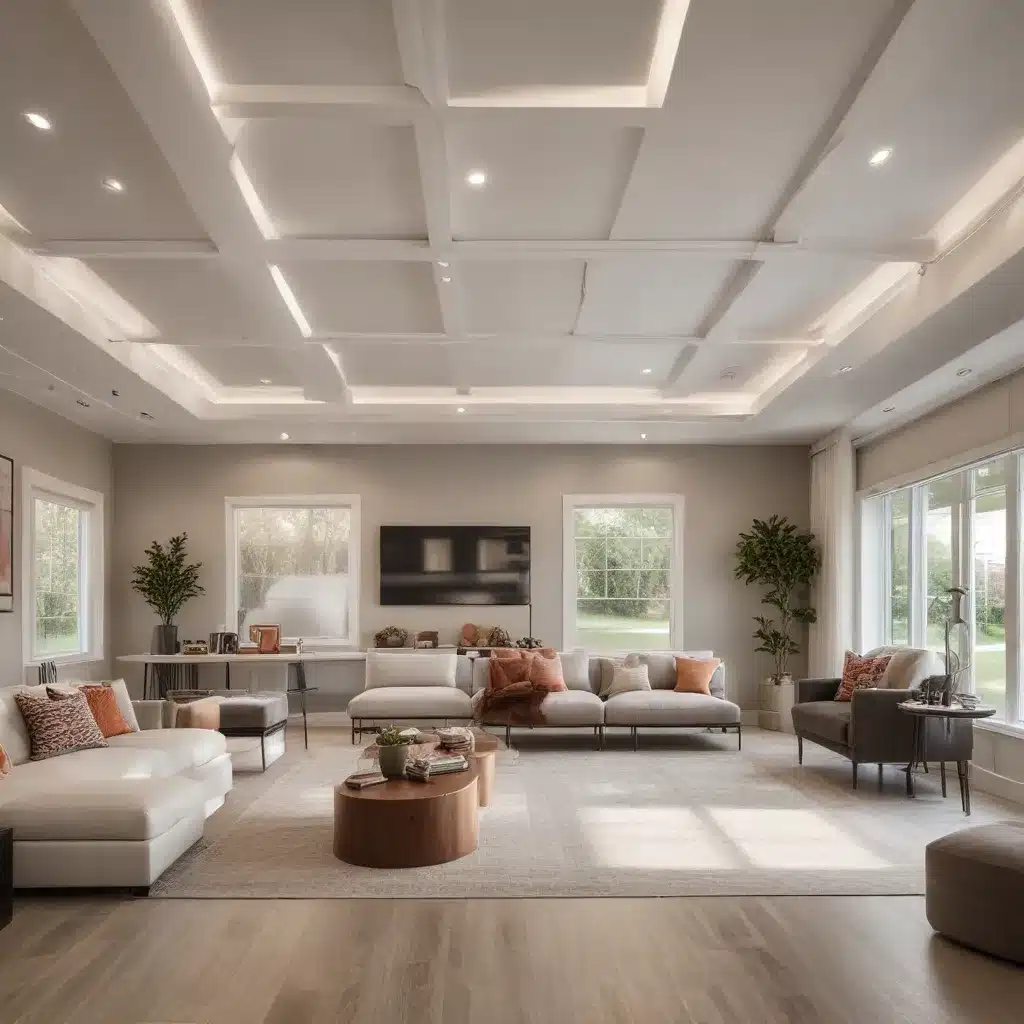
As an experienced home improvement consultant, I’ve seen a growing trend towards multipurpose rooms that can seamlessly adapt to the evolving needs of modern households. Gone are the days of rigid, single-function spaces; today, savvy homeowners and designers are rethinking how we utilize every square foot, embracing flexible layouts and transformative interiors. In this comprehensive guide, we’ll explore strategies to maximize the utility of multipurpose rooms, uncovering practical solutions for budget-friendly projects, eco-friendly renovations, family-centric designs, and inspiring trends.
Evolving Multipurpose Spaces
Redefining Functionality
Traditionally, rooms in our homes were assigned specific purposes – a formal living room, a dedicated dining area, a private home office. However, the boundaries between these traditional spaces are becoming increasingly blurred as we seek to optimize our living environments. Multipurpose rooms allow us to merge various functions into a single, flexible space, catering to our evolving needs and lifestyles.
Take, for example, the rise of the “great room” – a combined living, dining, and kitchen area that encourages open-concept, family-friendly living. By eliminating unnecessary walls and creating a seamless flow between these once-separate zones, homeowners can foster a greater sense of connection and togetherness. Similarly, the concept of a “flex room” has gained popularity, offering a versatile space that can transition from a home office to a guest suite, a playroom to a home gym, adapting to the changing needs of the household.
Adaptable Layouts
Central to the success of multipurpose rooms is their ability to adapt to different activities and configurations. Innovative design strategies emphasize flexibility, with layouts that can be easily reconfigured to suit various purposes. Modular furniture, transformative storage solutions, and zoning techniques allow homeowners to curate their space, tailoring it to their unique needs and preferences.
Maximizing Utility
Optimizing the utility of a multipurpose room is key to ensuring it serves as a truly valuable asset within the home. By integrating smart storage, thoughtful delineation, and ergonomic design, these versatile spaces can accommodate a wide range of functions without sacrificing functionality or aesthetics. Homeowners can maximize their investment by embracing multifunctional furnishings, blending living zones, and incorporating versatile room designs that cater to their evolving needs.
Flexible Design Strategies
Modular Furnishings
One of the hallmarks of a successful multipurpose room is its ability to adapt to changing needs, and modular furniture plays a crucial role in achieving this. Pieces that can be reconfigured, rearranged, or easily relocated allow homeowners to quickly transform the space to suit different activities, from a cozy conversation nook to a spacious dining area.
Transformative Interiors
Beyond just furniture, the very structure of the room can be designed to offer flexibility. Sliding walls, retractable partitions, and movable storage units enable homeowners to easily adjust the room’s layout, separating or combining zones as needed. This transformative approach empowers users to curate their environment, ensuring the space remains adaptable and relevant over time.
Optimizing Spatial Flow
Thoughtful zoning and delineation strategies can help define distinct areas within a multipurpose room, creating a sense of organization and purpose without compromising the overall openness. Strategically placed area rugs, lighting fixtures, and architectural elements can guide the flow of movement and activities, ensuring the space remains visually cohesive and functionally efficient.
Multipurpose Trends
Multifunctional Furnishings
As homeowners seek to maximize the utility of their limited square footage, the demand for multifunctional furnishings has skyrocketed. From ottomans with hidden storage to coffee tables that transform into dining surfaces, these ingenious pieces seamlessly blend form and function, enabling homeowners to pack more versatility into their multipurpose rooms.
Blended Living Zones
The lines between traditional room designations are becoming increasingly blurred, as homeowners embrace the concept of blended living zones. A single space might now incorporate a cozy seating area, a compact home office, and a discreet homework nook – all within a cohesive, visually harmonious design. This integrated approach fosters a sense of fluidity and adaptability, catering to the diverse needs of modern households.
Versatile Room Designs
As the trend towards multipurpose rooms gains momentum, designers are exploring innovative room design solutions that elevate flexibility and functionality. Modular wall systems, transformable furniture, and convertible architectural elements allow homeowners to effortlessly transition between various configurations, ensuring the space remains relevant and responsive to their evolving needs.
Rethinking Room Utilization
Innovative Storage Solutions
Maximizing the utility of a multipurpose room often comes down to effective storage solutions. Innovative storage features, such as built-in cabinetry, hidden compartments, and multifunctional furnishings, can help homeowners maintain a clutter-free, organized environment, even as the room’s purpose shifts. By seamlessly integrating storage into the overall design, the space can remain adaptable and visually appealing.
Zoning and Delineation
Thoughtful zoning and delineation strategies are essential for ensuring a multipurpose room maintains a sense of order and purpose. Architectural elements, such as raised platforms, area rugs, or strategic lighting, can help define distinct zones within the space, guiding the flow of movement and activities. This approach allows homeowners to strike a balance between openness and functionality, ensuring the room remains cohesive and efficient.
Enhancing User Experience
At the heart of a successful multipurpose room lies a focus on the user experience. By prioritizing ergonomics, accessibility, and intuitive design, homeowners can create a space that not only adapts to their needs but also enhances their overall well-being. From adjustable workstations to inclusive furnishings, the integration of user-centric design principles can elevate the functionality and comfort of a multipurpose room.
As we continue to rethink the way we utilize our living spaces, the concept of the multipurpose room has emerged as a transformative solution. By embracing flexible design strategies, innovative furnishings, and a focus on adaptability, homeowners can create dynamic, family-friendly, and eco-friendly environments that cater to their evolving needs. Whether you’re embarking on a budget-friendly renovation or seeking to incorporate the latest inspirational trends, the strategies outlined in this article will empower you to maximize the potential of your multipurpose rooms. Discover the power of flexible design and unlock new possibilities for your home at Reluctant Renovator.



